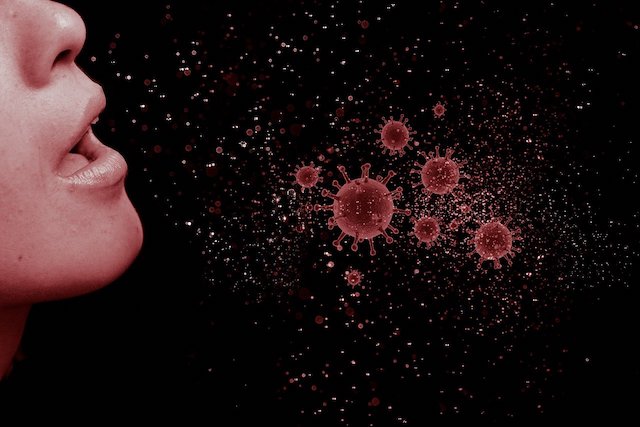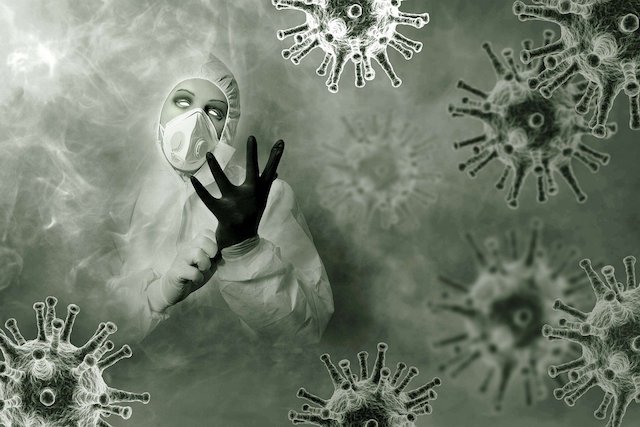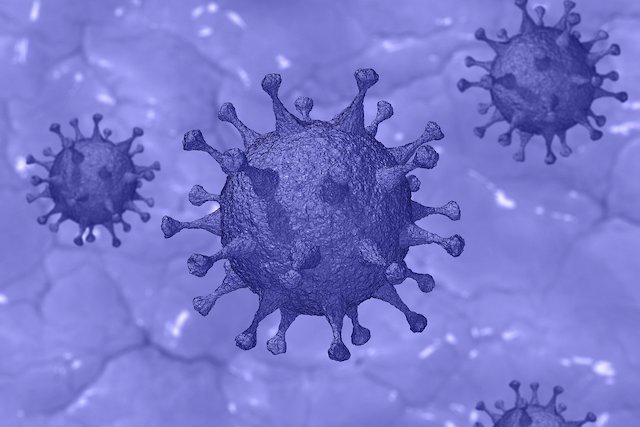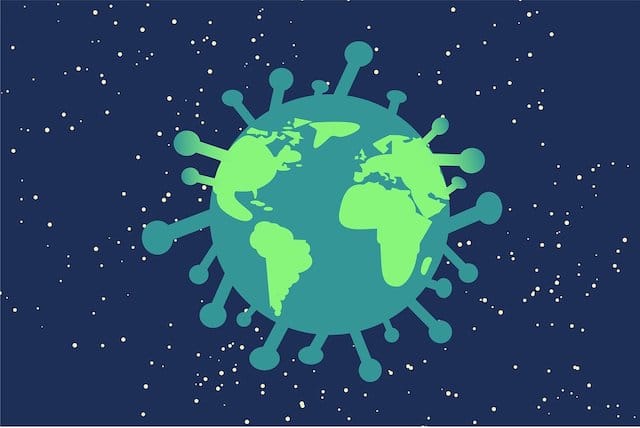The global pandemic of COVID-19, the new disease caused by the novel coronavirus, has not only taken its toll in human lives but continues to sow economic and social disruption. Amongst the very real health concerns, physical distancing and economic assistance efforts, there have been some remarkable incidents of panic and disruption, ranging from the absurd to the tragic to the despicable. Here we see the crazier responses to COVID-19 the world is seeing…
10. The Garlic Gaffe

In the wake of global coronavirus panic, one woman in Zhejiang, China’s Tiantai county was admitted to hospital after consuming a total of 3.3 pounds of garlic over two weeks to fight the virus. Totaling 16 bulbs, her excess garlic consumption, and not coronavirus, formed the cause of her various symptoms.
The woman had suffered unpleasant symptoms including burning and temporary muteness due to the harsh inflammatory effects of such massive garlic intake that she requested a CAT scan. Doctors informed her that hers was not a case of the novel coronavirus but rather just an example of a garlic overdose. The accident happened following her learning that some people were recommending garlic as a way to address COVID-19, even though it is not a valid treatment for the increasingly deadly disease.
9. Iran’s Methanol Tragedy

Fear of a pandemic is not a good reason to poison yourself. Methanol is very different from ethanol, the type of alcohol we drink. Methanol is a killer. Then why did many people in Iran, afraid of dying from the novel coronavirus, consume methanol? Alcoholic beverages are not legal in Iran, which drives a black market for “bootleg” alcohol. This can include undrinkable industrial alcohol components, with the odor being concealed with bleach.
Tragically, adults giving methanol containing solutions to children led to some of the worst incidents. According to the Jakarta Post, 44 people in Iran died from anti-COVID-19 motivated consumption of alcohol that was not fit for human consumption. The New York Times reported 480 deaths from the methanol consumption, with 2,850 ill. Tragically, one 5-year-old boy was even blinded as a result of the alcohol not fit for human consumption.
8. The Toilet Paper Toil

One of the most amusing, yet absurd, outcomes of the COVID-19 outbreak is the prevalence of mass toilet paper panic purchasing. All around the planet, the phenomenon has manifested in one and the same way: people traveling in herds to department stores, grocery stores, home supply shops, and even dollar stores in search of toilet paper. Fights have broken out, toilet paper has been hoarded, and limits have been strictly set to stop said hoarding. Online supplies have been depleted, leaving only novelty toilet paper available.
Meanwhile, those who legitimately want to maintain their regular supply of toilet paper have faced delays. There never was a real shortage, and the hype and images of empty toilet paper shelves has simply fed the issue. Why? Because of ignorance and group-think, along with individual desires to be clean, fear of supplies running out, and most of all, a desire to be in control of one’s life in uncertain times. Still silly.
7. The Fast Food Fraud

Thinking of calling in sick to work? That bogus time off request gets a lot more serious when a simple desire to skip work involves a fake proclamation of coronavirus positive test results, complete with forged medical documentation. Amidst the havoc of the coronavirus fallout, Hamilton, Ontario police responded to report from a McDonald’s restaurant regarding the existence of a bogus doctor’s note declaring that an 18-year-old employee had the virus.
Panic had set in, the restaurant had been shut down, and sanitation professionals had been retained to disinfect the premises. Many people were negatively affected as all those who had worked with her at the McDonald’s joint had to go home and self-isolate due to the apparent possibility that they had contracted the virus. When the plan fell through, the 18-year-old scammer was arrested and charged with has a court date for May 2020, facing four charges addressing criminal offenses that include mischief, forgery, and fraud.
6. Gun Hoarding

Amidst the uncertainty caused by the novel coronavirus and the disease it causes, COVID-19, gun sales are going through the roof. In the United States, there have been large lineups outside gun stores as people fear social change and possible unrest in the wake of the virus. At the same time, the demographics buying guns in increased quantities varies.
It’s not just young survivalists who are imagining the end of the world and thinking they might have to play the hero, either. Retirees, such as one older woman who noticed “people acting oddly,” finally decided to buy a gun. She feared increased opportunistic crime following COVID-19 related social disruptions, and many others like her are among the growing lists of customers. Finally, fears that government limitations on weapons supplies further motivate purchases.
5. Pet Peril

The novel coronavirus is believed to have jumped hosts from animals to humans, but some peculiar cases have emerged. A pet Pomeranian and a German Shepherd in Hong Kong got the virus, while a cat in Belgium is the latest victim. The truth is stranger than fiction. Close contact with pets allows non-human species to contract the virus in a manner apparently similar to the way in which humans can contract the virus.
Unfortunately, panic has set in, as seen in cases where owners have rather dramatically tried to re-home pets over fear of harming their furry friends with the virus, rather than simply following basic hygiene rules that should be sufficient. Hand washing, placing of pets in separate rooms, and avoiding kissing or hugging are methods that should be employed to avoid transmission to pets in case of testing positive for the virus. There is no need to give up one’s pet.
4. Tanked

It’s natural to scramble for the medicine cabinet in hopes of locating a potentially suitable medicine, or at least a tonic, to gain some measure of perceived protection against a novel viral pandemic. While such measures are proving ineffective, some more extreme misguided attempts to ward off COVID-19 are turning deadly. A man from Arizona died during the pandemic not from COVID-19 itself but from aquarium cleaner ingested by the man and his wife, who was hospitalized.
The cleaning product, known as chloroquine phosphate, had a name remarkably similar to anti-malaria medications Chloroquine and Hydroxychloroquine, which have coincidentally recently been given FDA approval as treatments for coronavirus treatment in emergency situations. The disastrous and ill-advised guesswork illustrates the dangers of misunderstanding superficially similar chemical names. For example: you can put a little tasty Sodium Chloride (table salt) on your food every day, but sipping Sodium Hypochlorite (laundry bleach!) would kill you in a state of terrible suffering, or maim you for life from the inside.
3. Street Beatings

The COVID-19 outbreak and following global pandemic has sparked its fair share of panic and pandemonium. But few incidents are garnering as much media attention as the clashes between street vendors, delivery workers, and other apparently essential services and local police in India. Street vendors wanting to remain in operation to provide food to those needing it most during the pandemic have been faced with uncertain regulations and a lack of uniformity around enforcement and operation permissions.
Police have been criticized for violently beating perceived (or actual) rule breakers, including street vendors. A police officer in Delhi ended up with a suspension following the alleged beating of a vegetable merchant. It is true that groups have been breaking physical distancing regulations by crowding into shops, but as one street vendor explained regarding overzealous behavior, “You don’t beat up the people who are trying to feed you.”
2. Shameless Profiteering

In the wake of the coronavirus-fueled pandemic, many “entrepreneurs” have engaged in what might rightfully be termed “predatory purchasing,” where they clean the shelves of essential supplies like cleaning products, sanitizers, gloves, and toilet paper. This irresponsible behavior amounts to both feeding hysteria and artificially constricting supplies for those who really need them.
British Columbia, Canada has been forced to respond to the plundering and profiteering by enacting emergency orders that criminalize this unfair purchase and resale of essential products including food, medical supplies and cleaning products. Rule breakers can be fined large sums of money or jailed. British Columbia’s Public Safety Minister, Mike Farnworth, spoke about the problematic existence of a “shameful black market for medical supplies” that would be “punished to the full extent of the law.”
1. Extreme Racism

Racist extremism, some targeting Chinese people directly and some blaming other nationalities for the coronavirus (or confusing them with Chinese), has occurred around the world in the fallout of the virus. Chinese people have faced outrageous incidents of abuse and even violence in countries like the Netherlands, where a 65-year-old Dutch man of Chinese ethnic heritage was pushed off a bicycle, and in Italy, where a Chinese man was attacked with a glass bottle at a gas station. Even within China, some people from Wuhan, the center of the initial coronavirus outbreak, have reported discriminatory treatment by Chinese people from other provinces.
Attacks on Chinese people in different countries are bad enough, but the number of coronavirus fueled racist attacks on people from other Asian countries such as Japan, parts of India, Vietnam, Thailand, Korea and Laos have also occurred, blindly associating almost any Asian people with the novel coronavirus. A law student from Singapore was attacked so violently in London that he went in for surgery. Dr. Cary Wu, an assistant professor in the department of sociology at the University of York in Canada is conducting front line research on what he terms “anti-Asian-looking” attitudes, explaining that universities should be doing more to combat discrimination. Wu explains the term “Asian-looking” is used because people who “look Asian” may actually be born elsewhere.